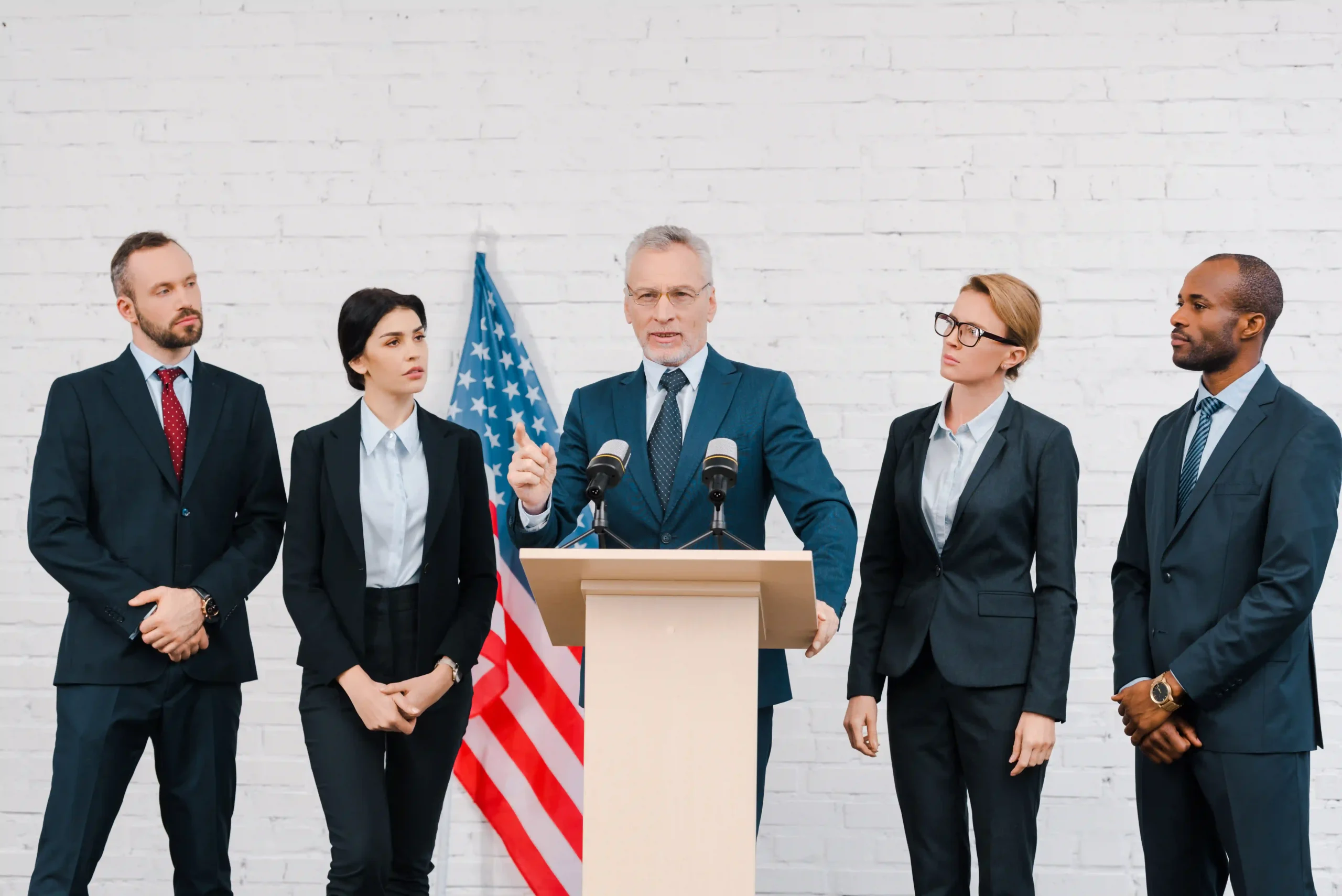The Environmental Protection Agency (EPA) is one of the most powerful regulatory agencies in the United States, responsible for enforcing laws that keep our air, water, and land clean. But who ensures the EPA stays accountable and follows the law?
Who oversees EPA decisions, policies, and actions? The short answer is that multiple layers of oversight exist to prevent overreach, mismanagement, or political bias.
These include the President, Congress, federal courts, and internal watchdog organizations. At Tri-Link FTZ, we understand the importance of regulatory oversight because, as a leading third-party logistics (3PL) provider in a Foreign Trade Zone (FTZ), we work closely with customs, compliance agencies, and international regulations.
Just like the EPA, the trade and logistics industry must adhere to strict oversight, ensuring transparency and efficiency. Our 35 years of experience in logistics and supply chain management give us a unique perspective on how federal oversight impacts businesses across industries, including environmental regulations.

The EPA was established in 1970 under President Richard Nixon to respond to growing concerns about pollution and environmental damage. The agency’s mission is simple but broad: protect human health and the environment by enforcing laws designed to reduce pollution, monitor hazardous materials, and promote sustainability.
The EPA enforces major environmental laws, including:
While the EPA creates and enforces regulations, it does not operate independently. This is where oversight comes into play, ensuring that the agency follows the law, makes science-based decisions, and remains accountable to the American people.
The EPA is not a self-governing agency. It is subject to multiple levels of oversight from the executive branch (President), the legislative branch (Congress), the judicial branch (federal courts), and internal watchdogs like the Office of Inspector General (OIG).
Each of these bodies plays a role in ensuring that the EPA operates within legal boundaries and remains transparent in its decision-making process.
The President has significant influence over the EPA, primarily through appointing the EPA Administrator, who serves as the head of the agency. The Administrator’s policies and decisions align with the President’s environmental agenda.
For example, a pro-business administration might prioritize economic growth over strict regulations, while a pro-environment administration may push for aggressive climate policies. The President also approves or rejects the EPA’s annual budget, which determines how much funding the agency receives to enforce environmental laws.
Additionally, Presidents can issue executive orders directing the EPA to expand, modify, or roll back regulations. For instance, past administrations have used executive orders to limit carbon emissions, while others have reduced regulatory restrictions to promote energy production.
Congress is one of the most powerful oversight bodies of the EPA. It not only passes environmental laws but also funds the agency through the federal budget.
The House and Senate Committees on the Environment regularly conduct hearings on EPA actions, questioning administrators about controversial regulations and enforcement policies. Congress can override EPA decisions by passing legislation that modifies or nullifies existing rules.
Additionally, the Congressional Review Act allows lawmakers to repeal new EPA regulations within 60 days if they believe the agency overstepped its authority. At Tri-Link FTZ, we see this type of congressional oversight in trade regulations as well.
Just as Congress regulates customs enforcement in Foreign Trade Zones, it also ensures that agencies like the EPA operate within their intended scope without causing unnecessary economic harm.
The EPA is frequently challenged in court by businesses, environmental groups, and state governments. The federal courts determine whether the agency’s regulations align with federal law or overstep its authority.
Some of the most impactful Supreme Court cases affecting the EPA include:
When an EPA regulation is challenged, courts assess whether the agency properly followed legal and scientific procedures. If a court finds that a rule was rushed, politically motivated, or not based on sound science, it can block or revise the regulation. Read more here.
At Tri-Link FTZ, we’ve seen how court decisions impact regulations in global trade as well. For example, tariff disputes and trade restrictions often end up in court, shaping how businesses operate in foreign trade zones.
The same applies to environmental law—court rulings dictate the EPA’s power and influence over industries.
Beyond external oversight from the President, Congress, and courts, the EPA also has its own internal watchdog: the Office of Inspector General (OIG). This office operates independently within the EPA and investigates:
The OIG regularly audits EPA programs and releases reports to Congress and the public, holding the agency accountable. If serious misconduct is found, the OIG can recommend policy changes, firings, or legal action against EPA officials. Read more here.
This type of internal oversight is crucial in any large organization. At Tri-Link FTZ, we conduct internal audits and compliance checks to ensure our operations meet federal trade and customs regulations.
Just as the OIG monitors the EPA, third-party logistics companies like ours must self-regulate to remain transparent and efficient.
One of the most significant ways the EPA is overseen is through leadership changes. When a new EPA Administrator is appointed, the agency’s priorities can shift dramatically.
As of January 29, 2025, Lee Zeldin serves as the 17th EPA Administrator, appointed by the President and confirmed by the Senate. His background in public service, military leadership, and legislative experience shapes his approach to environmental regulation.
Congress and advocacy groups are already watching Zeldin’s policy changes closely. Some expect a shift toward business-friendly regulations, while others worry that critical environmental protections could be weakened.
Oversight bodies, including Congressional Committees and federal courts, will play a crucial role in ensuring the EPA’s regulations remain within legal limits. At Tri-Link FTZ, we’ve experienced how leadership changes in regulatory agencies impact the logistics and trade industry.
A new customs director or international trade policy shift can completely alter how foreign trade zones operate. Just as we stay ahead of changes in supply chain regulations, businesses across various industries must monitor shifts in EPA leadership to prepare for regulatory changes.

While the EPA operates at the federal level, it relies heavily on state governments to enforce and implement environmental regulations. This partnership allows states to tailor environmental programs to local needs while maintaining federal compliance.
Most environmental laws allow the EPA to delegate regulatory enforcement to state environmental agencies. This means that state governments issue permits, conduct inspections, and monitor pollution levels based on EPA guidelines.
However, states can also:
Some states have challenged the EPA’s authority in court, arguing that federal overreach limits economic development. Others have sued the agency for not acting aggressively enough on environmental issues like water contamination and industrial pollution.
This type of state-federal cooperation is something we understand well at Tri-Link FTZ. In foreign trade zones, businesses must comply with both U.S. Customs and Border Protection (CBP) and local state regulations.
The balance between federal oversight and state autonomy ensures fair enforcement while maintaining economic growth—something we believe applies equally to environmental regulations.
While the EPA has broad regulatory power, it is not above the law. If the agency oversteps its authority, multiple oversight bodies step in to correct the issue.
If the EPA creates a rule that violates federal law or lacks scientific backing, it can be:
For example, in West Virginia v. EPA (2022), the Supreme Court ruled that the EPA exceeded its authority in trying to regulate power plant emissions without explicit congressional approval. This ruling set a precedent, limiting the agency’s ability to expand environmental regulations without legislative backing.
As a 3PL and FTZ provider, we’ve also seen what happens when agencies overstep their authority. Customs regulations, tariffs, and trade restrictions are constantly challenged in federal courts to ensure businesses operate under fair and legal guidelines.
Just as logistics companies rely on clear, enforceable trade laws, industries affected by the EPA must have clear and legal environmental regulations.
Public involvement is one of the most powerful tools for ensuring EPA accountability. Citizens, businesses, and advocacy groups can influence environmental policy through:
The EPA is required by law to allow public participation in its rule-making process. Every proposed regulation includes a public comment period, where individuals and businesses can voice concerns, suggest changes, or support a rule.
For industries like logistics and trade, public involvement is crucial. At Tri-Link FTZ, we actively engage with regulatory agencies to ensure that new trade policies align with business realities.
The same applies to environmental regulations—businesses that rely on EPA policies should stay informed and participate in discussions to protect their interests.

The EPA’s role in safeguarding public health and the environment is critical, but without proper oversight, the agency’s power could be misused or weakened. Oversight from the President, Congress, federal courts, and watchdog agencies ensures that environmental laws are enforced fairly and effectively.
Proper oversight is important because it:
At Tri-Link FTZ, we understand that oversight is necessary in all industries—whether it’s environmental protection, customs regulations, or international trade policies. In logistics, customs oversight ensures fair trade practices and prevents fraud.
In environmental policy, EPA oversight ensures that regulations are effective, fair, and science-driven. The balance between regulatory enforcement and economic development is a delicate one, but it is essential for long-term sustainability in both business and environmental protection.
The question of “who oversees EPA” is critical for businesses, policymakers, and the public. The EPA operates under multiple layers of oversight, ensuring that its regulations align with scientific evidence, legal authority, and public interest.
By understanding the EPA’s structure, leadership changes, and legal challenges, businesses—especially those in industries affected by environmental regulations—can stay informed and proactive in shaping policies that impact their operations. At Tri-Link FTZ, we’ve built our business on compliance, transparency, and adapting to changing regulations.
Whether in environmental law, customs enforcement, or international trade, oversight plays a key role in maintaining fair and effective governance.
By staying informed about EPA oversight and regulatory trends, businesses can navigate compliance requirements more effectively and contribute to a more sustainable future.
Share this article
We have other resources available upon request as well as one-on-one support and personalized answers, just like our services.
Simply contact us anytime and we’ll get back to you to answer your questions and provide meaningful answers that show you how Tri-Link supports your logistics, reduces costs, and accelerates efficiency.
Tri-Link delivers exceptional FTZ and 3PL services tailored to your global trade needs.
Our solutions combine innovation, quality, and efficiency to exceed your expectations and meet your specific requirements.